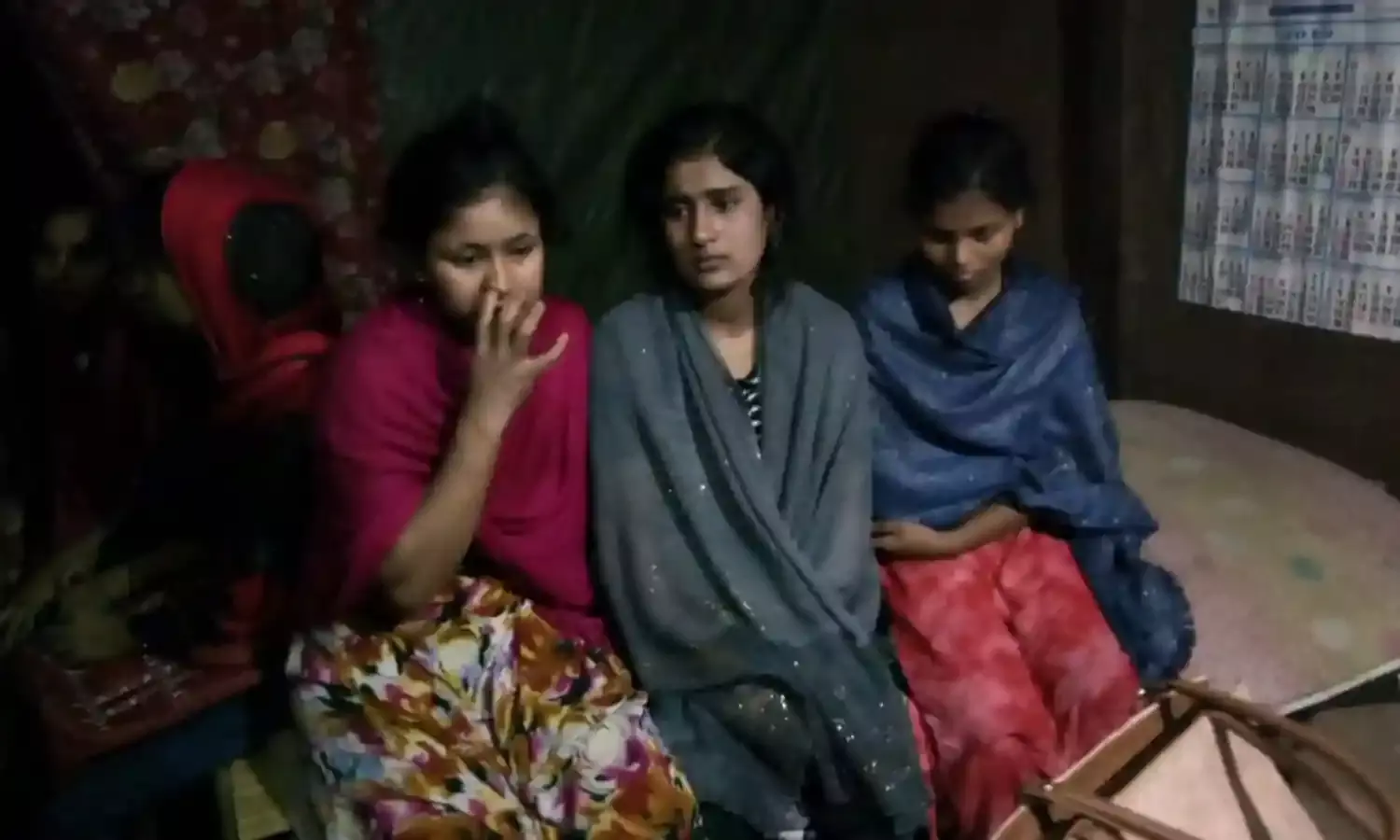Mizoram Grapples Alone With Refugees and Human Trafficking
Girls rescued from traffickers

AIZAWL: Without a concrete national policy on refugees, particularly Rohingyas, the government of Mizoram is in a quandary as the trickle of refugees looks set to become a flood. Altogether, there are about 235 refugees in the state from Myanmar which includes 16 trafficked Rohingya women, mostly teenage girls, who were rescued recently.
Plans to ‘push’ them back to their country as instructed by the Union Home Ministry have so far failed, as it would mean putting these refugees back in the jaws of death, which would create a human rights hullabaloo as some officials said.
As a midway solution, it is learnt that the government is thinking of handing over the rescued girls to an appropriate NGO, as it claims not to have the wherewithal to handle their case.
Most of the refugees, around 219 of them, belong to the ethnic Zakhaw group from the Rakhine state in Myanmar. Some 1,700 of them had fled their homeland seeking refuge in Mizoram across the international border when fighting broke out in November 2017.
Eight Rohingya girls were rescued from human traffickers in the evening of June 17, 2019 in Khawbung Sesaw village located in the Champhai district of Mizoram and were brought to the Dungtlang Police Station in Saikhumphai village just nodding distance from the Myanmar border.
The girls, all teenagers, were in a Tata Sumo, the driver of which told police that he had been paid to hand them over to some people in Saikhumphai. At Saikhumphai, the Mizoram police caught hold of two Myanmarese nationals who were there to take charge of the girls.
They confessed that they were to take the girls across the border from where they were to be trafficked to Indonesia, Singapore and Malaysia, telling the police that they had planned to slip the girls across the border for which they just have to cross a stream.
In April last again another eight women were detained at the Mizoram-Assam interstate Vairengte Police check-gate when they failed to produce any documents to identity themselves. The women claimed to have been abducted by unknown men from Kutupalong Refugee Camp in Bangladesh’s Cox Bazaar area.
Experts said that if the girls are below 18 years, they have to be handled under the Child Rights protocols as victims and not criminals.
In April itself another group of women, numbering 69 from Nepal were rescued from a hotel in Aizawl, the state capital as they were being herded to Gulf countries via Mynamar. Maiti Nepal, an organisation working to curb human trafficking in Nepal said that the Aizawl authorities had told them that while these women were rescued, more than 190 Nepalese women had already crossed over to Myanmar through Mizoram in the last few months.
Hosting refugees is nothing new for Mizoram, India’s tiny and most remote state from the capital Delhi. It has been battling a massive refugee problem since the 1980s and has for decades hosted over one lakh Burmese refugees.
Just when they thought the worst was over with the return of ‘democracy’ in Myanmar, the Rohingya issue exploded onto the scene affecting Mizoram again. The state shares a 404 kilometre border with Myanmar along its entire eastern side, and 318 kilometres with Bangladesh on its western flank.
The Rohingya issue is far more complicated as the Rohingyas have been labelled as foreigners and infiltrators from Bangladesh by the Myanmarese authorities, and are being ‘pushed out’ to that country.
Wedged between these two bedraggled, troubled giants of South and Southeast Aisa, Mizoram, with its porous borders has become little more than a corridor for people fleeing the ethnic violence in those countries.
It has always been a safe passage for arms and drugs smugglers, and lately seems to have become the secure route for human traffickers as well, for the state easily links the three countries within a short distance.
Not only that, most of the border is unmanned and unpoliced, said local sources, giving these criminal activities free leeway. The state itself is plagued with one of the most widespread problems of youth drug addiction and a powerful mafia controlling drug smuggling.
Myanmar is under the global spotlight with the Myamarese Army’s crackdown on Rohingyas in August 2017 forcing more than 7 lakhs of them to flee. Around the same time clashes broke out with the Arakanese Army in Paletwa town in Chin state, forcing people to flee. As tensions have escalated since then and fresh violence continues, the trickle of refugees from these conflicts is impacting the peaceful state of Mizoram, where refugees have sought haven.
Some of the injured fighters have also sought medical treatment in the state’s hospitals. Fighting has spread, even impacting the Sitwe region, where India is building a port for the Kaladan multimodal highway project to link trade between Myanmar and India through Mizoram. This looks dicey now, local sources said, as rather than a route for trade it may become a highway for the flow of refugees from Myanmar and Bangladesh.
While most of the 1,700 or so Zakhaw refugees have left for home, 219 of them from 54 families have refused to do so, creating tensions in the state, which in the absence of central government support has little infrastructure to keep these refugees housed and properly fed, or even keep them under surveillance.
Meanwhile, the government of India seems oblivious to the security problems on its eastern borders and in the strategically located state of Mizoram. It is to be noted that India has ratified the United Nations Convention on Transnational Organized Crime (UNTOC) and the UN Protocol to Prevent, Suppress and Punish Trafficking in Persons Protocol (known as the UN Trafficking Protocol).
Cover Photograph: Rohingya trafficked girls rescued by the Mizoram Police on June 17, 2019 in the Dungtlang Police Station of Saikhumkphai village in the Champhai District of Mizoram bordering Myanmar. Photograph by MAPUIA HNAMTE



